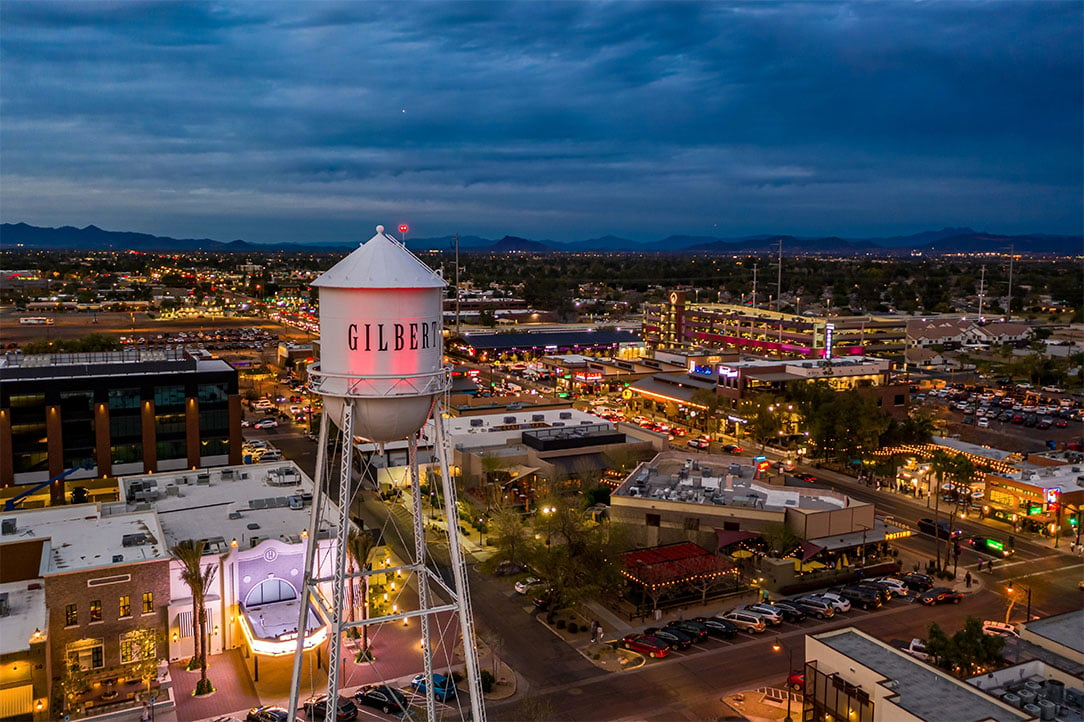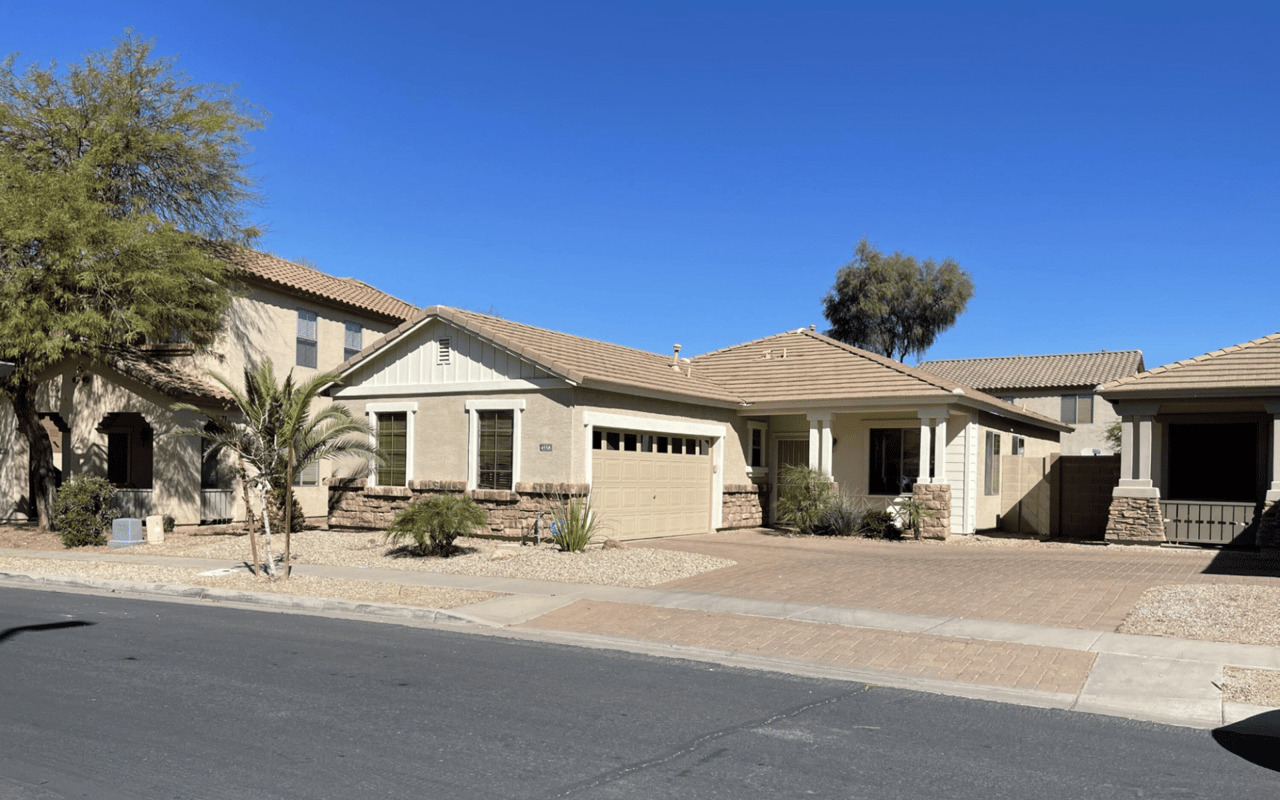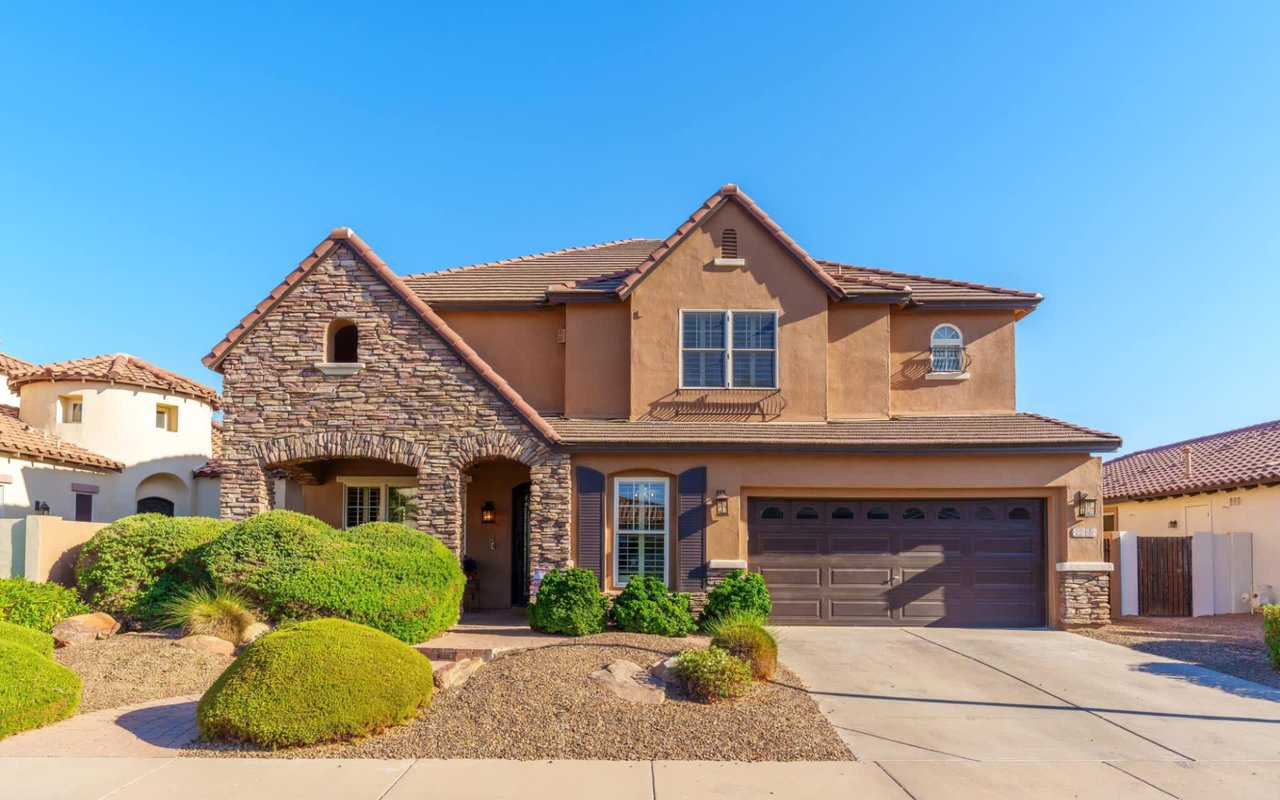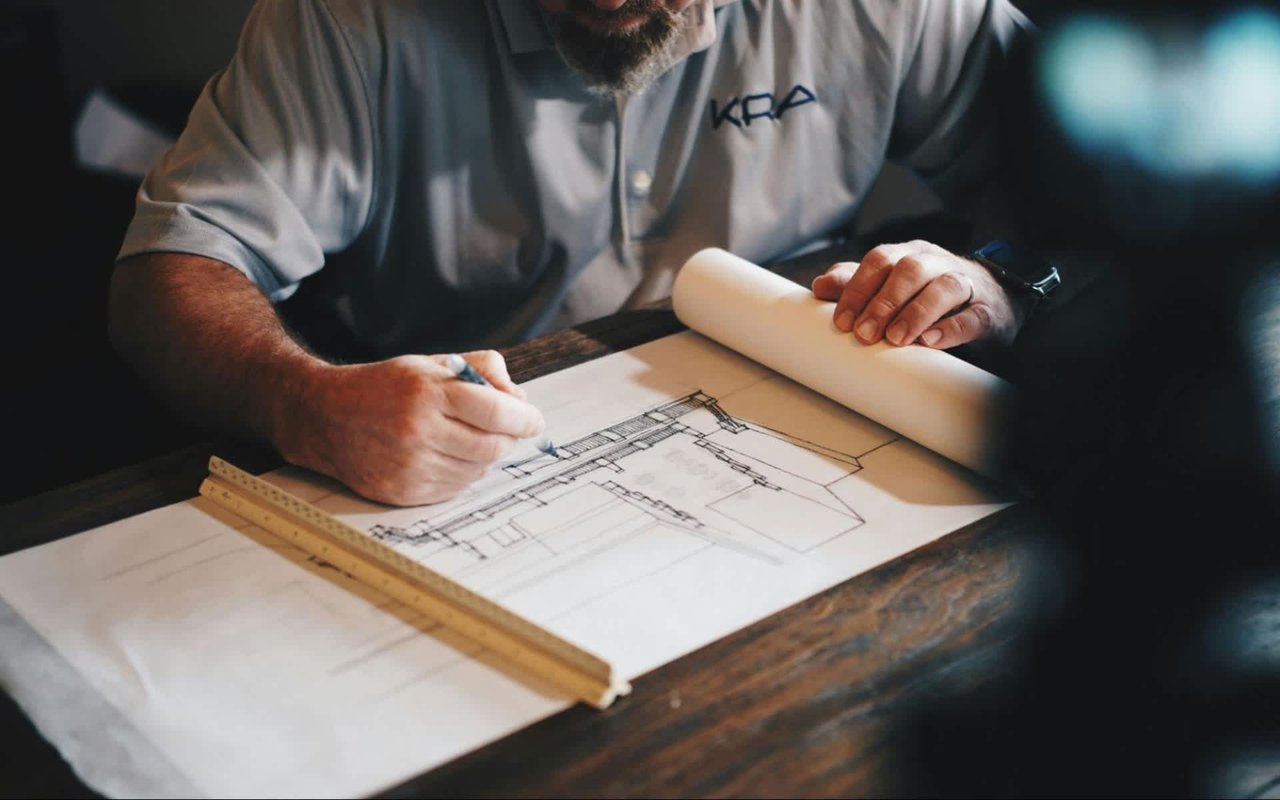In the heart of Arizona, the town of Gilbert is a testament to architectural diversity and modernity. Known for its lush desert landscapes and lively community, Gilbert has an array of architectural landmarks that reflect both its historical roots and contemporary innovations. Whether you’re contemplating purchasing a home here or simply want to explore local architecture, Gilbert is a must-see.
Historic Heritage
Gilbert’s journey began as a small farming community and has since evolved into a thriving suburban epicenter, making Gilbert's real estate an attractive investment. Once dubbed the "Hay Shipping Capital of the World" due to its agricultural roots, Gilbert has managed to retain its small-town charm despite its rapid growth. The preservation of historic buildings alongside the integration of new, sustainable designs showcases the town’s commitment to maintaining its heritage while embracing the future. Visitors and residents alike are reminded of the town’s agricultural origins through its careful conservation of historic structures, which stand as a testament to the town’s rich past. As Gilbert grows, these landmarks serve as cultural touchstones, connecting the community with its historical identity.
The Gilbert Heritage District
At the heart of Gilbert's architectural pride is the
Heritage District. This preserved area is not only a hub for social gatherings, with its array of shops and restaurants, but it also serves as a living museum of early 20th-century architecture. The district blends modern amenities with historic charm, making it a vibrant focal point of the town. The Heritage District provides an engaging walk through time, with many of its buildings dating back to the town’s early days.
One of the district’s most prominent structures is the original
Gilbert Elementary School, constructed in the early 1900s. The school, with its red brick facade and classic design, has been carefully restored and is a poignant reminder of Gilbert’s educational beginnings. Another iconic feature is the Gilbert Water Tower, built in 1927, which remains a beloved landmark. The tower is a center of activity during town events, illuminated during celebrations, and proudly stands as a symbol of Gilbert’s resilience and growth over the decades.
The Liberty Market Building
Another standout piece of Gilbert’s historical landscape is the
Liberty Market Building. Originally a grocery store built in 1935, this building has since been transformed into a popular dining destination while still maintaining its historical essence. The original structure, with its classic architectural lines and retro signage, preserves the spirit of early 20th-century Gilbert, reflecting the modest yet industrious nature of the town during that period. Inside, modern renovations coexist harmoniously with the building’s original features, creating a dynamic space that represents Gilbert’s unique fusion of past and present.
Liberty Market’s transformation into a culinary hotspot is an example of how Gilbert is breathing new life into its historic structures, maintaining their architectural integrity while repurposing them for contemporary use. The building stands as an emblem of the town’s ability to embrace progress without erasing its historical roots.
The American Legion Post 39
A hidden gem within Gilbert’s architectural landscape is the
American Legion Post 39, which was established in 1929 to honor the veterans of World War I. The post itself is housed in a modest building that exemplifies early 20th-century simplicity, but its historical significance is profound. As one of the oldest continually operating American Legion posts in Arizona, Post 39 is not only a tribute to the town’s veterans but also a piece of Gilbert’s social fabric. Over the years, it has served as a meeting point for veterans and community members, contributing to the sense of camaraderie and unity that has long been a hallmark of Gilbert.
The building’s preservation is a testament to the town’s dedication to honoring those who served and the importance of maintaining community spaces that foster historical remembrance. The architectural simplicity of the building belies its deep-rooted significance, representing the era’s modesty and the values of those who built the community.
Contemporary Civic Structures
As Gilbert has transitioned from a quiet farming town to a bustling suburban hub, its growth is reflected in the development of contemporary civic buildings that seamlessly blend functionality with aesthetic appeal. These modern structures contribute significantly to the town’s vibrant architectural landscape, further enhancing the attractiveness of Gilbert’s real estate market. By prioritizing innovative design, sustainable practices, and community engagement, these civic structures showcase Gilbert’s commitment to creating spaces that serve both practical and cultural purposes.
The Gilbert Environmental Education Center
The Gilbert Environmental Education Center stands as a pioneering example of modern architecture aligned with eco-conscious principles. Designed to harmonize with its surrounding environment, this facility plays a key role in the town’s sustainability initiatives. Utilizing state-of-the-art green technologies, such as solar panels, rainwater harvesting systems, and energy-efficient HVAC systems, the center minimizes its carbon footprint while maximizing its educational potential.
The architecture of the Environmental Education Center embodies a forward-thinking ethos, with the building’s sleek lines, large windows, and natural materials creating a seamless connection between the indoors and the natural landscape. Inside, the center is equipped with interactive exhibits and learning spaces that focus on conservation and environmental stewardship, further highlighting its dual role as both a functional facility and an educational hub. The center is not just a physical structure but a representation of Gilbert’s dedication to environmental sustainability and innovative design.
Gilbert Civic Center
The
Gilbert Civic Center is a modern architectural marvel that reflects the town’s progressive outlook and commitment to transparency in governance. This sleek structure incorporates an extensive use of glass and steel, symbolizing openness and accessibility. The glass facade allows natural light to flood the interior spaces, reducing the need for artificial lighting and contributing to the building’s energy efficiency. The transparency of the design also serves as a metaphor for the town’s inclusive and open government, inviting residents to engage with their civic leaders in a welcoming environment.
Beyond its architectural significance, the Civic Center is a vital hub of activity for Gilbert’s residents. It serves as the main site for local government operations and is home to various administrative offices. Additionally, the center regularly hosts community events, public meetings, and civic celebrations. Its spacious design allows for large gatherings, while its outdoor areas, landscaped with desert flora, provide a serene setting for public gatherings and outdoor events. The Gilbert Civic Center is more than just a governmental building; it is a symbol of community engagement and civic pride, embodying the spirit of modern governance and unity.
The Higley Center for the Performing Arts
A crowning jewel in Gilbert’s cultural and architectural scene, the
Higley Center for the Performing Arts stands as a testament to the town’s commitment to fostering a vibrant arts community. The building’s design is both functional and visually stunning, making it a key cultural landmark in Gilbert. Inspired by the unique southwestern landscape, the center’s architecture features earthy tones and rugged textures that reflect the natural beauty of the surrounding Arizona desert. The use of indigenous materials, such as stone and stucco, ties the structure to the local environment, while modern design elements, including expansive glass windows and clean lines, lend the building a contemporary feel.
Inside, the Higley Center boasts state-of-the-art performance spaces, including a large auditorium and smaller, more intimate venues for local productions, concerts, and cultural events. The design of the interior spaces prioritizes acoustics and audience experience, with attention to detail that ensures both performers and spectators enjoy the highest quality of sound and sight. The building’s aesthetic appeal, combined with its cutting-edge facilities, has made it a central hub for the performing arts in Gilbert, attracting talent from across the region and providing residents with access to top-tier performances.
The Higley Center for the Performing Arts is a prime example of how Gilbert’s architectural growth goes beyond functionality, creating spaces that inspire creativity and foster cultural engagement. Its design serves as a bridge between the natural world and the creative arts, representing a harmonious balance between tradition and modernity in the town’s architectural evolution.
Residential Innovations
Gilbert's residential areas reflect the town's architectural diversity. From sprawling luxury estates to quaint bungalows, the housing styles in Gilbert cater to a wide range of preferences and lifestyles, making it a top contender in the Gilbert real estate market.
Luxury Communities
Gilbert's luxury communities are an embodiment of modern residential innovation, offering high-end living spaces that are as technologically advanced as they are aesthetically pleasing. Communities such as Waterston, a prestigious neighborhood known for its grand estates and picturesque landscapes, exemplify the trend of blending luxury with sustainability. These homes are designed with meticulous attention to detail, featuring spacious floor plans, custom finishes, and high-end amenities that cater to the needs of discerning homeowners.
What sets these luxury residences apart is their incorporation of smart home technologies. Features like automated lighting, climate control, security systems, and home automation hubs allow residents to control their homes with ease, often through smartphone apps or voice commands. Additionally, sustainability is a core element of these luxury homes. Many feature energy-efficient appliances, solar panels, and eco-friendly building materials, reflecting a growing trend toward environmentally conscious living. These sustainable design choices not only reduce the environmental impact of the homes but also lower utility costs for residents. Gilbert’s luxury communities are a testament to the town’s ability to combine elegance with innovation, offering a lifestyle that is both refined and future-forward.
Classic Charm Meets Contemporary Needs
While Gilbert’s luxury homes are known for their cutting-edge design, the town’s more traditionally styled neighborhoods have not been left behind in the evolution of residential architecture. Even in areas where homes are designed to evoke the charm of earlier eras, there has been a shift toward integrating modern conveniences and contemporary design principles to meet the needs of today’s homeowners. These homes often feature classic architectural elements such as gabled roofs, brick facades, and front porches, but they have been remodeled or newly built with an eye toward functionality and modern living.
One of the most prominent trends in these neighborhoods is the incorporation of open floor plans. Traditional compartmentalized rooms have given way to expansive, flowing spaces that allow for more flexibility in how homeowners use their living areas. This design fosters a sense of connection and openness, making homes feel larger and more inviting. Large windows that flood the interior spaces with natural light are another common feature, not only enhancing the aesthetic appeal but also promoting energy efficiency by reducing the need for artificial lighting.
Integrated indoor-outdoor living spaces have also become a hallmark of Gilbert’s residential design, allowing homeowners to seamlessly transition from their living rooms to patios or outdoor kitchens. This design approach reflects the desire for homes that can accommodate entertainment and relaxation, particularly in Arizona’s warm climate. Whether through bi-folding doors, retractable glass walls, or extended patios, the connection between indoor and outdoor spaces has become a key feature in Gilbert homes, creating environments that blend the comforts of indoor living with the beauty of outdoor surroundings.
In these traditionally styled neighborhoods, homeowners are increasingly incorporating modern amenities such as updated kitchens with state-of-the-art appliances, energy-efficient HVAC systems, and advanced home security systems. This blend of classic aesthetics with contemporary functionality ensures that these homes retain their charm while meeting the evolving needs of today’s families. Gilbert’s ability to merge the best of both worlds—classic charm and modern convenience—has made these neighborhoods highly sought-after by buyers looking for homes that offer both character and comfort.
Architectural Landmarks within Driving Distance
While Gilbert boasts its own impressive architectural heritage, there are several iconic landmarks within a short drive that are well worth exploring. These sites offer a deeper dive into the rich architectural, cultural, and historical fabric of the greater Phoenix area, each representing a unique period or style of design.
Taliesin West: Frank Lloyd Wright’s Desert Masterpiece
Located in nearby Scottsdale,
Taliesin West is one of the most celebrated creations of legendary architect Frank Lloyd Wright. Built in the 1930s as Wright’s winter home and architectural school, this desert oasis stands as a powerful example of his organic architecture philosophy, where buildings are harmoniously integrated with their natural environment. Wright carefully selected materials such as local stone and wood to blend the structure into the surrounding desert, creating a seamless flow between interior and exterior spaces.
The low, horizontal lines of the building echo the desert landscape, while large windows and terraces offer stunning views of the Sonoran Desert. Visitors to Taliesin West can tour the property and witness firsthand how Wright's design embraced natural light, airflow, and the rugged beauty of the terrain. The site remains an active architectural school and is a UNESCO World Heritage Site, providing valuable insight into Wright’s innovative techniques, his belief in harmony with nature, and his profound influence on American architecture. The intricate geometric patterns, custom furniture, and even the landscape design reflect Wright’s attention to detail, making Taliesin West a must-see for architecture enthusiasts.
The Arizona State Capitol: A Historical Jewel
In Phoenix, just a short drive from Gilbert, stands the
Arizona State Capitol, a monumental structure that offers a window into the state’s political and architectural history. Completed in 1901, the Capitol’s neoclassical design—characterized by its imposing columns, pediments, and the signature copper dome—represents a period of American architecture that was heavily influenced by ancient Greek and Roman styles. This architectural approach was chosen to convey the stability, democracy, and grandeur of the newly formed Arizona Territory, which wouldn’t become a state until 1912.
The Capitol building served as Arizona's governmental hub until the state’s growing population required expansions, and today, it operates as a museum showcasing Arizona’s journey to statehood. Visitors can explore the intricately designed interior, which includes historic chambers and exhibits on the state’s past. The building’s majestic dome is topped with a copper statue of Winged Victory, symbolizing Arizona’s progress and hope for the future. Its architecture, blending classical proportions with materials reflective of Arizona’s unique environment, remains a proud symbol of the state’s heritage and a compelling architectural landmark.
Heard Museum: Celebrating Native American Cultures and Art
Also located in Phoenix, the
Heard Museum is a significant cultural institution known for its extensive collections of Native American art and heritage. However, the museum’s architectural design is equally remarkable, merging traditional Southwestern styles with modern elements. The building’s exterior is a nod to the region’s indigenous architectural heritage, with adobe-style facades, arched entryways, and courtyards that reflect the desert landscape. Its design creates a warm, inviting atmosphere that complements the rich cultural narratives housed within its walls.
Inside, the museum’s layout flows between intimate galleries and larger exhibition spaces, allowing for a dynamic display of art and artifacts. The blend of traditional Native American architectural features, such as vigas (wooden beams) and stucco walls, with contemporary design elements, reflects the Heard Museum's mission of honoring the past while engaging with the present. Visitors are greeted with an aesthetic that seamlessly weaves together old and new, creating an immersive experience as they explore the vibrant history and art of Native American cultures. The museum's architecture not only serves as a backdrop but actively contributes to the storytelling experience.
The Phoenix Art Museum: A Modern Artistic Venue
For those who appreciate modern architecture, the
Phoenix Art Museum is an architectural gem that stands out in the city’s arts district. Its contemporary design emphasizes clean lines, open spaces, and minimalist elegance, making it a visually striking building that serves as the largest visual arts institution in the southwestern United States. The museum, designed by renowned architect Tod Williams, reflects modernist ideals of form following function. Its sleek, expansive structure provides an ideal setting for the display of a wide variety of artworks, from classic to cutting-edge contemporary pieces.
The building's open galleries feature tall ceilings, large windows, and wide, unobstructed floor plans that create a sense of space and light, enhancing the experience of viewing art. The museum’s architecture is designed to guide visitors through its various collections, with a layout that encourages exploration while maintaining a sense of flow. The building itself is part of the artistic experience, embodying the principles of modern architecture with its emphasis on simplicity, functionality, and harmony with the surrounding environment. In addition to its role as a venue for art, the Phoenix Art Museum is a landmark of contemporary design in Arizona, showcasing how architecture can elevate and complement the art it houses.
Reach Out to Desaree Suttle to Explore Gilbert Real Estate
If you are drawn to the architectural diversity and community-focused lifestyle of Gilbert, Arizona, Desaree Suttle is here to guide you through the many real estate opportunities this town has to offer. Whether you are looking to invest in a property or simply wish to explore more about Gilbert architecture, contact
Desaree Suttle today to begin your journey to discover the perfect home in Gilbert.










